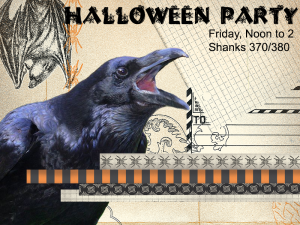This is the post for the November 5, 2014 class meeting.
I will point out some key points from the textbook, but you will spend most of your time planning a timeline for your project today. We also have one pitch to listen to today.
Lynda.com Resources
 Look for support for the tools you are using on the Lynda.com site, which is free with your vt.edu login. Here are some examples, based on tools you mentioned in your pitches:
Look for support for the tools you are using on the Lynda.com site, which is free with your vt.edu login. Here are some examples, based on tools you mentioned in your pitches:
- Up and Running with Prezi
- All InDesign tutorials
- All Flash tutorials
- Up and Running with Pinterest
- All iMovie tutorials
Key Points from Chapter 5
As you read and use information from Chapter 5 of Writer/Designer, pay particular attention to these details:
-
Table of Technology Choices on page 78.
-
The book explains that a multimodal project doesn’t have to be digital; however, what you make for Project 3 does have to be digital.
-
As you firm up your decision on what tool(s) to use, keep in mind the same questions you used to evaluate an interface in Project 2. There’s also a case study that starts on page 79 and a technology review on page 81.
-
Pay attention to the tips on organizing and naming your files on pages 88–89.
-
Consider making a short style guide for your work to ensure consistency, following the suggestions on page 89.
Dates for Your Timeline
As part of your work in the next 24 hours, sketch out a timeline (page 91) for yourself so that you get all your work done. Please incorporate these dates into your timeline:
- M, 11/10: Mock-up, Storyboard, and/or Outline.
- M, 11/17: Presentation Sign-up.
- W, 11/19: Rough Cut for Peer Feedback; Project 3 Revision Plan.
- F, 11/21: Selfie showing yourself at work.
- W, F, M, W, 12/3–12/10: In-class Presentations.
- W, 12/10: Project Due by 11:55 PM.
Writing Schedule and Homework
-
Wednesday, 11/5: Create a timeline for your project and link it or post it as part of your blog post for today. As usual, summarize what you’ve done and why you’ve done it as well.
-
Friday, 11/7: We’ll go over the highlights of Chapter 6, looking at mock-ups and storyboards. Most of the class time will be spent working on the project.
I will ask you to declare the primary technologies you will use in a blog post. -
Monday, 11/10: We will talk about rough cuts and revision plans, covered in Chapter 7.
-
Wednesday, 11/12: We will talk about publishing your project and your presentations, using information from Chapter 8.
-
Friday, 11/14: Lots of independent work.






